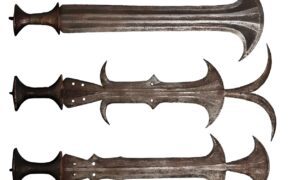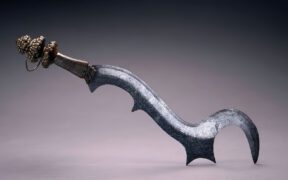Our content features commercial links to our products, committed to transparent, unbiased, and informed editorial recommendations. Learn More
The Whip Sword(Urumi): The World’s Most Bizzare Weapon
NO AI USED This Article has been written and edited by our team with no help of the AI
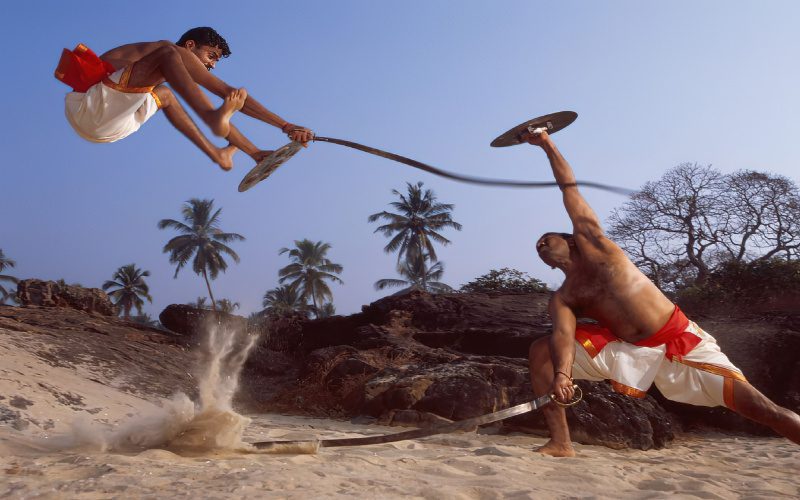
The Urumi or Aara, better known as the Indian Whip Sword, is a steel whip-like bladed weapon that comes from the southern parts of India. It is one of the most bizarre swords in the world and is considered to be the deadliest by some.
In this article, we shall discuss and explore the Indian Whip Sword and its very unusual characteristics. You will learn about how it was used in ancient times as both a weapon of war and a tool. Lastly, we will give you a general overview of its brief history and see how it compares to a regular sword.
What is a Whip Sword?
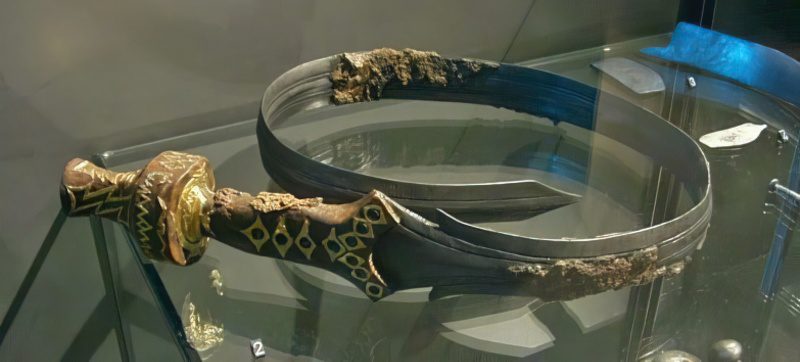
A whip sword is a bladed weapon that is shaped and functions the exact same way as a leather whip. It is meant to be used with the same motions as a whip, where the user flicks it at their opponent – only it’s made of deadly sharp steel.
The whip sword has a very thin, flexible blade making it difficult to actually use in combat, even more so if you’re untrained. A weapon that is similar to the whip sword is the unwieldy morning star flail. This weapon featured a spikey ball attached to a handle by a chain. It was often difficult to use in battle but devastating in the hands of a competent user.
Characteristics of the Urumi
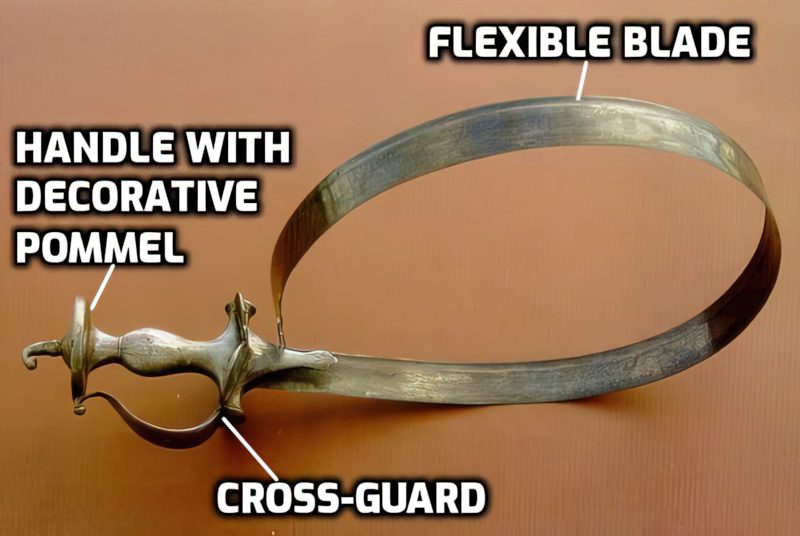
This Indian flexible sword called the Urumi is, without a doubt, the most distinct and interesting Indian weapon to come out of that region. Its most distinct characteristic is the very large and lengthy blade that can sometimes even reach the ground.
There can be as many as 32 blades on the Urumi sword. They will all start next to each other from the guard and twist and roll their way to the blade’s edge. The neck of these blades is very thin at the start, but it gradually widens towards the end. The amount of blades varies from sword to sword. Some will have a lot, while others will only have one.
No matter how many blades this Indian sword has, it was always made from very flexible steel to give it those whiplike properties. The overall length of the blade on the Urumi sword is 4 to 5.5 feet (120 to 168 cm) long.
Guard
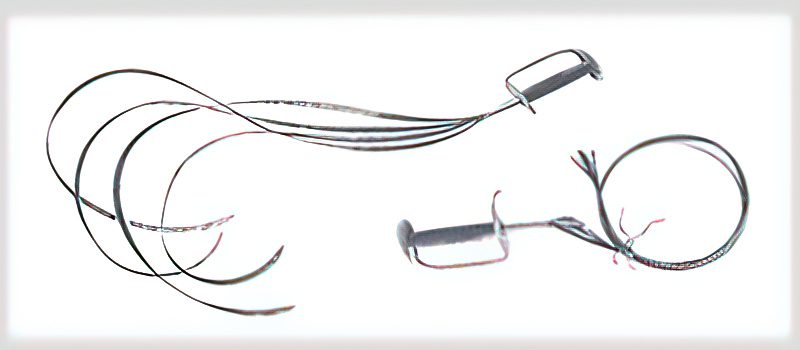
Some Indian whip swords had a guard, while others did not. Its thought that the smiths and wielders back then didn’t see a point in a hand guard due to the unique combat style of the whip sword. When you are swinging these long blades around, it’s hard for an opponent to even get near your hand, let alone your body.
Swords with a guard were circular so that the user’s hand would not slip away while performing those circular, attacking motions. Sometimes the Urumi had a knuckle guard combined with an Indian-fashioned cross-guard like the Indian Talwar. The guard also helped give the wielder a firmer grip on this long, flexible sword.
Handle
The Indian whip sword has a straight and very short handle. It has a disc hilt with indents and grooves all over it so the sword won’t slip out of the user’s hand. When combined with a knuckle guard, it has one of the firmest grips for a sword from its time.
Like many of the other Indian weapons, the overall handle of the Urumi sword is around 3.5 inches (9 cm). This size meant that it was used mainly as a one-handed sword. There simply wasn’t enough room to grip it with both hands. The overall combat style and whiplike features also meant that you were better off wielding it with just one hand.
Pommel
The pommel of the Urumi is often circular so that it can provide a better grip for the user’s hand. Sometimes it can be seen with a spike, which was mainly for decorative purposes. It wasn’t intended to be used to bash your opponent.
Scabbard
As you would expect, the Indian whip sword does not have a scabbard since it has an extremely long blade. Sometimes, the blades would be folded into a belt-like structure and stowed as such since there were no scabbards for it. Most wielders would wear it as a belt around their waist, going about their day without it being noticed by most people.
Length & Size
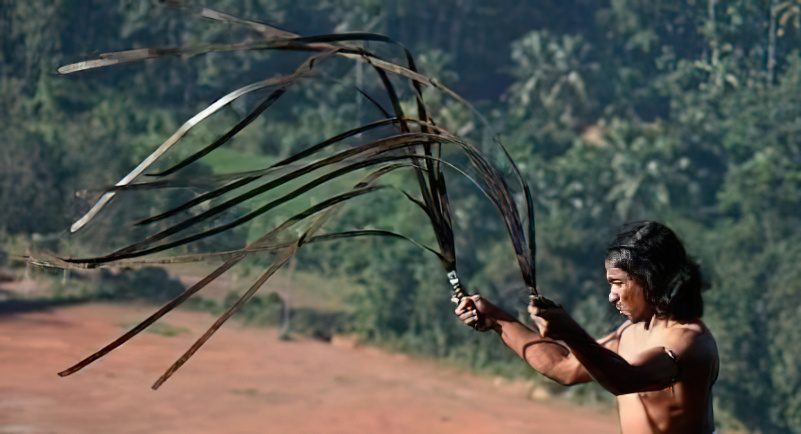
The overall length of the Indian whip sword can be anywhere from 4 to 5.5 feet (120 to 168 cm long). Almost all of that length is the blades, as the handle is often just a few inches in length.
The blade of the Urumi can be as wide as 1 inch (2.5 cm), and the handle is just a little smaller than that.
Weight
The weight of the Indian whip sword was very light since the material used for making the flexible steel is also very lightweight. Since it was meant to be whipped around, it had to be light. The combat style used with the Indian whip sword simply would not have worked if the sword had been made from heavier materials.
Uses of the Indian Whip Sword
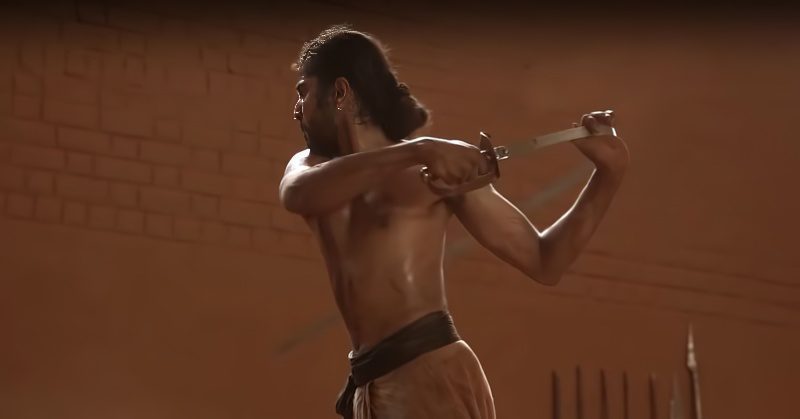
The Indian whip sword was primarily used as a one-handed weapon. It’s a very light instrument and was often used alongside a shield. With that said, it wasn’t uncommon to see it used dual-wielded with another Urumi.
It is a weapon that can prove deadly for opponents and can even harm the user if not used properly. That is why it takes a lot of time to fully understand and master the centrifugal force that is required to build the momentum and speed for this sword to be effective.
Warfare
Most people will agree that the biggest use for the Urumi was warfare. Although it might have been used for war, we certainly cannot agree that it was all that good.
When placed in the hand of an experienced user, though, it might have been a very effective tool for dealing with multiple opponents or scaring them away, as it would have been rare for invaders to see such a weapon.
Unlike whips, the steel blade of the Indian whip sword can easily cut through flesh and bone. Modern-day whip swords have been tested against objects like wood or ballistic gel, and the damage they can cause is clear.
While that is true, it didn’t see much use in military formations and warfare since it was a hard weapon to coordinate with other troops. The movements required to attack mean you need a large amount of space around you, or else you risk injuring your allies. It was, however, a great defensive weapon and was carried by many for that exact purpose.
Defensive
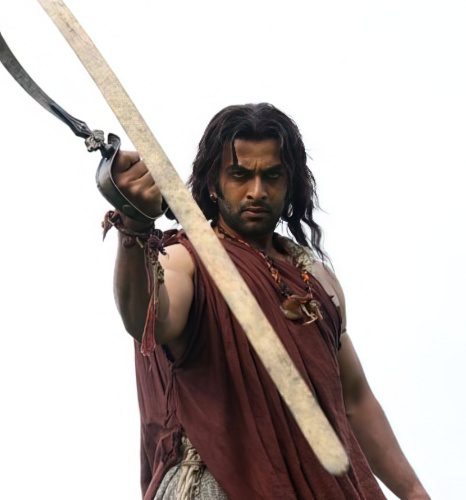
The most common use for the whip sword was for personal defense. Having a steel blade, or sometimes many blades, that you can whip around in a circle will make even the strongest foe back away.
It can be carried around your belt discretely and was often favored by women in the past to defend themselves. Whirling it around in a 360-degree motion will provide the user with a sort of safety bubble, as no one would want to risk entering its kill radius.
Ceremonial & Traditional
The Urumi is a big part of Indian culture, especially in Sri Lanka, Southern India, and Kerana, where this sword was originally from. Ancient Indian martial arts are still practiced and considered a cultural pastime in these regions. Today, there are some ceremonies where Indian warriors battle with an Indian Whip sword.
Modern & Martial Art

The Urumi sword may be part of one of the oldest martial arts in the world, known as Kalaripayattu. It’s said that this martial art may have influenced all of the Chinese and possibly even Japanese martial arts. The Kalari sword is also used in martial arts like Kuttu Varisai, Varma Kalai, and Sikh Gatka.
Today you can also get your own Urumi to practice these martial arts or just perfect the whip-slashing attacks on your own. It’s a very popular weapon in modern media, like Pathfinder, Age of Empires, Lord of the Rings, and many more.
If you do plan to use it, treat it with caution because you can easily harm yourself. There is a reason why it is the very last weapon that is taught to students in the Indian martial art of Kalaripayattu.
History of the Indian Whip Sword
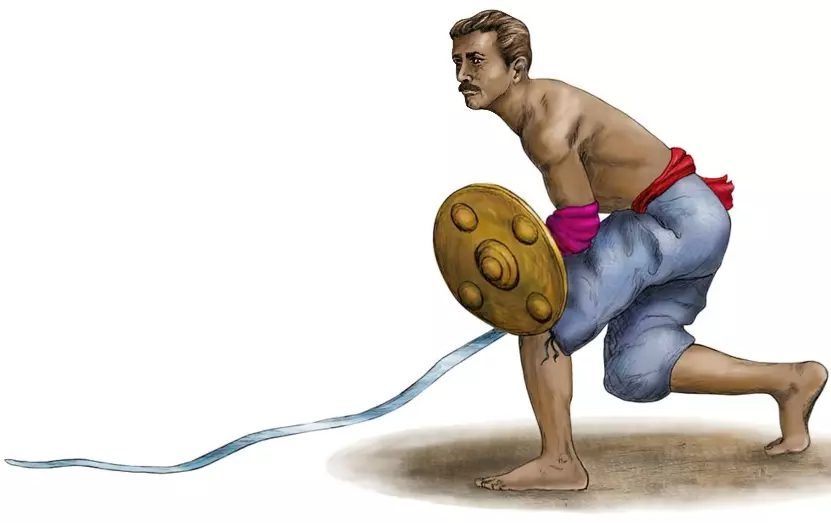
People in the southern parts of India, mainly Tamil Nadu and Kerala, are credited with the invention of the Urumi, Aara, or the Indian whip Sword. However, the exact date can be hard to trace, but it is possible that it was created during the period of the Mauryan dynasty, which lasted from the 4th century BC to the 2nd century BC.
It’s a very real sword that existed in history but wasn’t used a lot throughout it. It never took a big part in any of the wars or major battles when it was in use. If it was used, it was probably to scare off unwanted visitors and attackers or to enforce laws among the populace.
Though it wasn’t really used in major battles, it was, and still is, a very remarkable weapon used in martial arts even to this day.
Differences with Chain Whip Sword
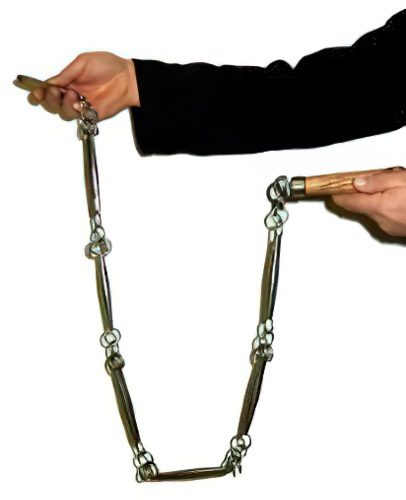
The Chain whip sword comes from Chinese martial arts and is different than the Indian whip sword. It’s important not to confuse the two as they’re used and made differently.
This chain whip sword consists of a bunch of metal rods that are linked to each other to form a sort of chain. It has the traditional Chinese tassel connected at one end and a sharp, deadly dart at the other that can be flung at opponents and then retracted.
This was usually a concealed weapon that would be hidden around the belt, just like the Indian whip sword, but it usually had poison on the tip of the dart that would kill enemies with just a single cut. The chain was also frequently used to strangle people or entangle them.
The Indian whip sword, on the other hand, is just a very long sword that is used with coiling strikes and is very flexible. Although it might be called a hidden weapon, it is primarily a defensive tool and wasn’t meant to assassinate enemies.
Indian Whip Sword Vs. Regular Sword

While it is a very dangerous weapon, the Indian whip sword is probably not the most dangerous sword ever made. If it was, it would have seen more use in battle and would have become a widespread weapon of destruction. Due to the fighting style and weapons opponents were using at the time, it simply never found its home in large-scale warfare and battle.
It is, without a doubt, one of the most interesting swords in the world, but all the experts that tested this weapon agreed that the weapon was more effective at inflicting pain and discomfort than it would be at killing.

Because of its poor cutting strength and little weight, even basic shields and light armor are capable of stopping it. It is a perfect weapon that will provide a safety bubble against people without swords, but even this proves to be a very draining task.
Conclusion
To sum it up, the long, bendy, and flexible blade of the Indian whip sword weaken its integrity dramatically. When faced with any type of single or double-edged sword, the Urumi swordsman will most likely lose the battle. Even though it isn’t the deadliest sword, as you can see throughout the internet, it is definitely one of the most bizarre and interesting weapons to have existed in the past. Today it is highly respected and plays a big role in Indian martial arts and culture, as well as being famous all over modern media.


